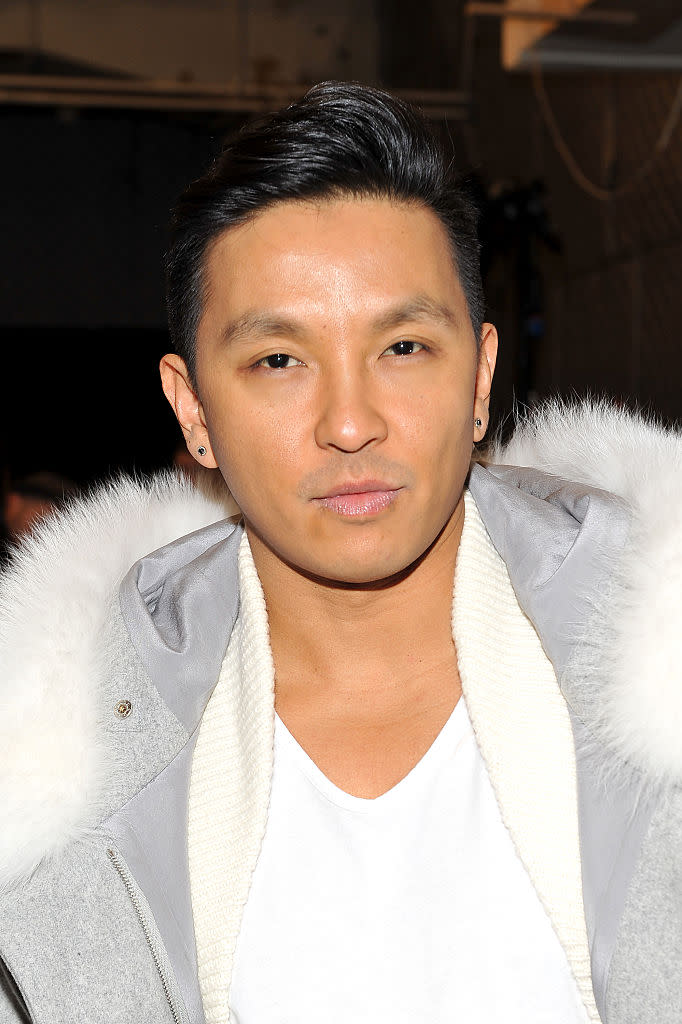Should We Blame Men for Body-Shaming and Slut-Shaming? One Designer Thinks So

Accomplished fashion designer Prabal Gurung, a native of Nepal, has taken a bold stance on the culture of shaming women. In an interview with the Hindustan Times, Gurung placed accountability primarily on men, saying, “The more I read about body-shaming or slut-shaming, the more I realize that it has little to do with the women and more to do with the men. It is not the women wearing the clothes that are the issue but the men judging them.”
Gurung — who has dressed Michelle Obama, Kate Middleton, Lady Gaga, Jennifer Lawrence, Zoë Saldana, and Priyanka Chopra, to name a few — prides himself on being a feminist and tells the publication that he is devoted to inclusiveness in his own aesthetic. He attributes his progressive mentality to being raised by a single mother. “My mother’s biggest passion in life was equality for herself and others. So for me, feminism is not a trending topic on social media or a vehicle to forward my own agenda,” the openly gay designer told the publication.
He doesn’t just talk the talk, though. Gurung consciously dresses women of all sizes — an approach that not enough designers are brave enough to adopt in an industry that glorifies ultra-thin figures. He tells the Hindustan Times: “Since day one, I have provided size zero to size 22. Also, I am working on a plus-size range, as I believe in being inclusive. In fashion, inclusivity doesn’t only mean including models of different colors and race but also of different body types.” But that doesn’t mean his clothes are necessarily reaching their target demographic. Gurung says that “it’s a shame” that more retailers aren’t inclined to stock larger-size garments.
Gurung’s eagerness to recognize women of all shapes and sizes and from all walks of life is likely rooted in his own experiences as an underdog. He tells the Hindustan Times that although Nepal allows gay marriage, “society as a whole is still homophobic.” He says the country was “not gay-friendly” when he was growing up and was “teased and mocked” for being a boy with interests that included drawing and dressing up paper dolls. “I was different, and I knew it from the very beginning,” Gurung told the publication. Again, it was his mother — his support system — who encouraged his talents and inspired both confidence and empathy in him.
Gurung has channeled that confidence to overcome career obstacles that could have been disastrous. The Hindustan Times says that when Gurung lost his job as creative director when his employer Bill Blass was shuttered, Gurung decided to launch his first label under his own name. It was 2007 — in the middle of a recession, no less. “Where other suddenly jobless people might have dived headfirst into depression or scrambled for any kind of employment elsewhere, Gurung ‘took that as a sign,'” the publication says. Gurung’s “guerrilla-style” solo endeavor clearly paid off — as did his moxie.
Now he’s applying that same resolve to helping to change the landscape of women’s fashion so that plus-size consumers can have all the same glamorous options as their smaller counterparts — and not have to suffer the humiliation of being judged and marginalized. “My goal as a designer is to give options,” he tells the publication. “I am not a good designer if I am only good at making size zero clothes.” And diversity transcends size for Gurung, who claims he enjoys dressing “women who are strong, intelligent, independent, and appreciative of the finer things in life.”
Of course, not everyone agrees with Gurung’s theory that men are responsible for body-shaming and slut-shaming. According to the Telegraph and vocal plus-size advocates like Tim Gunn, the fashion industry itself is to blame — for body-shaming anyway. Some female feminists even point fingers at fellow women for body-shaming — and others would say that women should own up to slut-shaming too.
Gurung points out that a third party — retailers — is also complicit. When discussing his designs for larger women, he told the Hindustan Times “it’s a shame that retailers don’t pick those.” Gunn echoed that very sentiment in a recent interview aired on the PBS NewsHour — and in an op-ed for the Washington Post. “In addition to the fact that most designers max out at size 12, the selection of plus-size items on offer at many retailers is paltry compared with what’s available for a size 2 woman,” Gunn wrote, noting in his video interview that he’s “baffled” as to why retailers aren’t demanding larger sizes, pointing out that the average size of an American woman is 16 to 18.
Gurung and Gunn seem to agree that what’s in order here is less shame and more options.
Follow us on Instagram, Facebook, and Pinterest for nonstop inspiration delivered fresh to your feed, every day.

